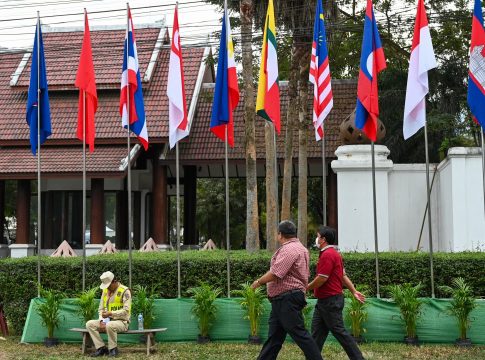Unleashing AI Potential in Southeast Asia: A New Era for Small Businesses
As global tech giants like the U.S. and China dominate discussions around artificial intelligence (AI) and generative AI (genAI), a quiet revolution is brewing in Southeast Asia. Experts are increasingly optimistic about the potential for small and medium enterprises (SMEs) in the region to harness these technologies—not just for growth, but for survival in a competitive marketplace.
The Data Behind the Surge
According to a report by Boston Consulting Group, AI and genAI could add a staggering $120 billion to Southeast Asia’s GDP by 2027. The report emphasizes the transformative power of technology to redefine business strategies and open up new revenue streams. A separate study by Google ranks countries like Singapore, the Philippines, and Malaysia as leading nations in terms of interest and demand for AI technologies, illustrating a vibrant curiosity across the region.
Youthful Energy Meets Tech Innovation
One of Southeast Asia’s most significant advantages is its youthful demographic. Nations like Vietnam, Malaysia, and the Philippines boast a high percentage of business leaders under 40, a factor that fosters a culture of innovation, adaptability, and keen interest in technology. As Soumik Parida from RMIT University notes, this young, internet-savvy population is eager to embrace new technologies, giving them a global voice and an edge over competitors.
AI in Action: Key Use Cases
In the realm of e-commerce, the surge in AI adoption is evident. A report by Lazada and Kantar highlights that customer service leads the way as the top use case, followed closely by marketing and advertising. A McKinsey survey highlights that 63% of companies have implemented genAI for text generation, primarily for marketing and sales, revealing growing alignment with global trends.
For instance, Lita Global, an Indonesian social media platform for gamers, has integrated OpenAI’s models to host almost double the number of online gaming events monthly. The efficiency gained not only boosts revenue by an average of 20% per event but also enhances user engagement through AI-powered chat functionalities—yielding a 10% to 20% increase in orders.
Live Shopping: A Novel Channel
Another promising avenue is the rise of AI-driven livestream shopping. This low-cost alternative is gaining traction among SMEs that may lack the resources for traditional livestreaming setups. As companies like TopviewAI demonstrate, businesses can host engaging, interactive shopping experiences through AI, significantly lowering operational costs while amplifying sales potential.
The Cost Barrier
Despite its immense benefits, the adoption of AI in Southeast Asia faces hurdles—chiefly, cost. While AI chatbots for basic tasks can dramatically reduce labor costs, more sophisticated systems remain a financial stretch for many small businesses. Lita Global spends around $2,000 monthly to power its AI applications, including essential tools like APIs, which offer a more efficient entry point to building AI capabilities without starting from scratch.
Looking forward, Gartner predicts the average costs of genAI APIs could plummet to less than 1% of current pricing by 2027, making advanced technology more accessible to smaller players in the market.
Embracing Change in a Competitive Landscape
In emerging markets like Southeast Asia, where labor remains cheap, the initial motivation to adopt AI-based efficiencies might seem low. Still, as Jochen Wirtz from the National University of Singapore points out, embracing technology can lead to far better outcomes in existing business practices.
In many ways, AI’s growing presence in the region mirrors earlier technological advancements like e-hailing services, which transformed customer experiences and reduced fraud. With a tech-savvy, hungry young workforce, Southeast Asian entrepreneurs are poised to make AI a cornerstone of their business strategies—making the region a formidable player on the global stage in the budding AI economy.
Conclusion
The integration of AI is not just about modernization; it’s essential for survival in an increasingly competitive environment. As small businesses in Southeast Asia navigate their AI journeys, the ongoing evolution promises to redefine industries and create unprecedented opportunities for growth.

Writes about personal finance, side hustles, gadgets, and tech innovation.
Bio: Priya specializes in making complex financial and tech topics easy to digest, with experience in fintech and consumer reviews.

